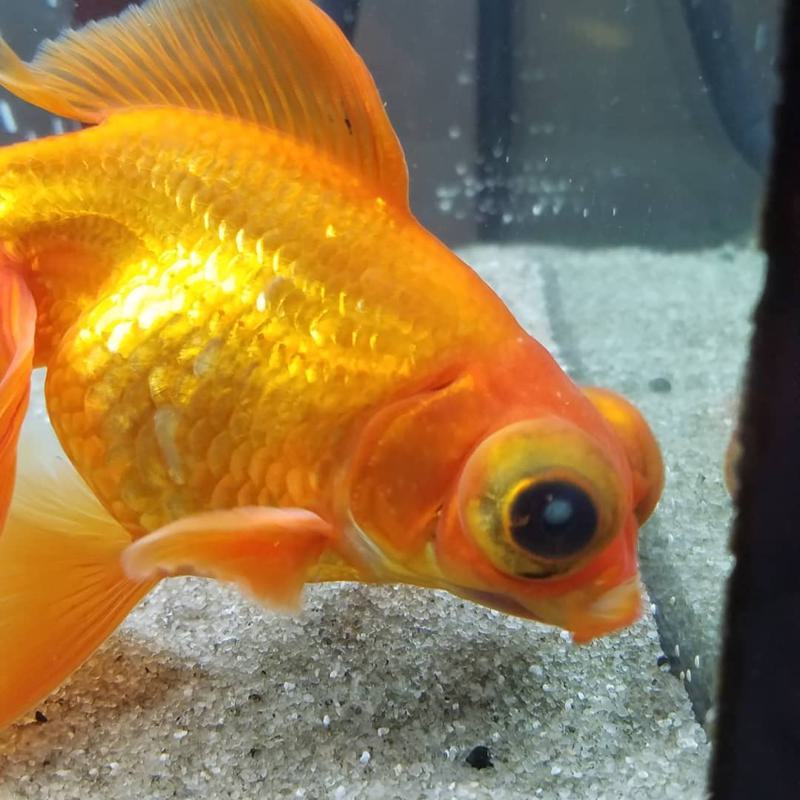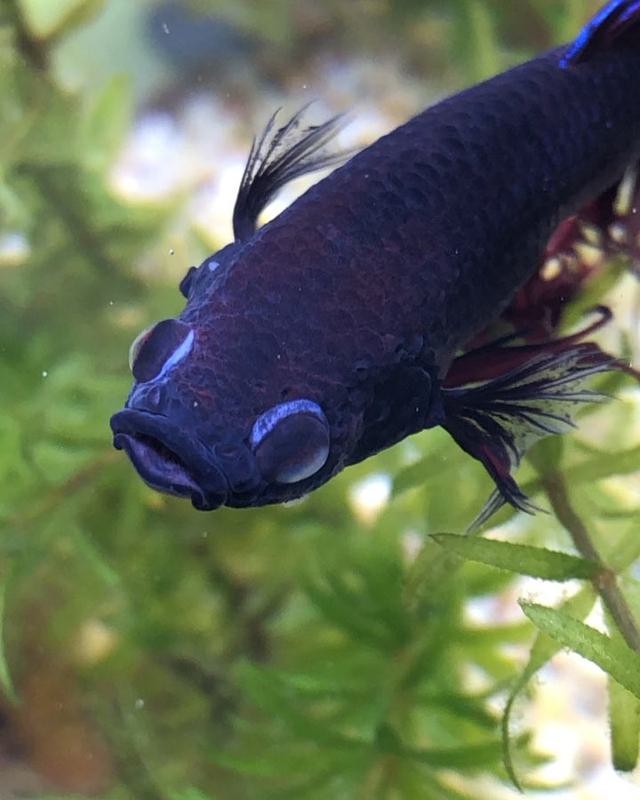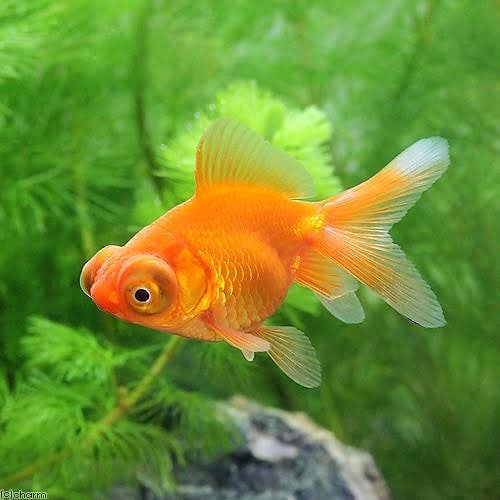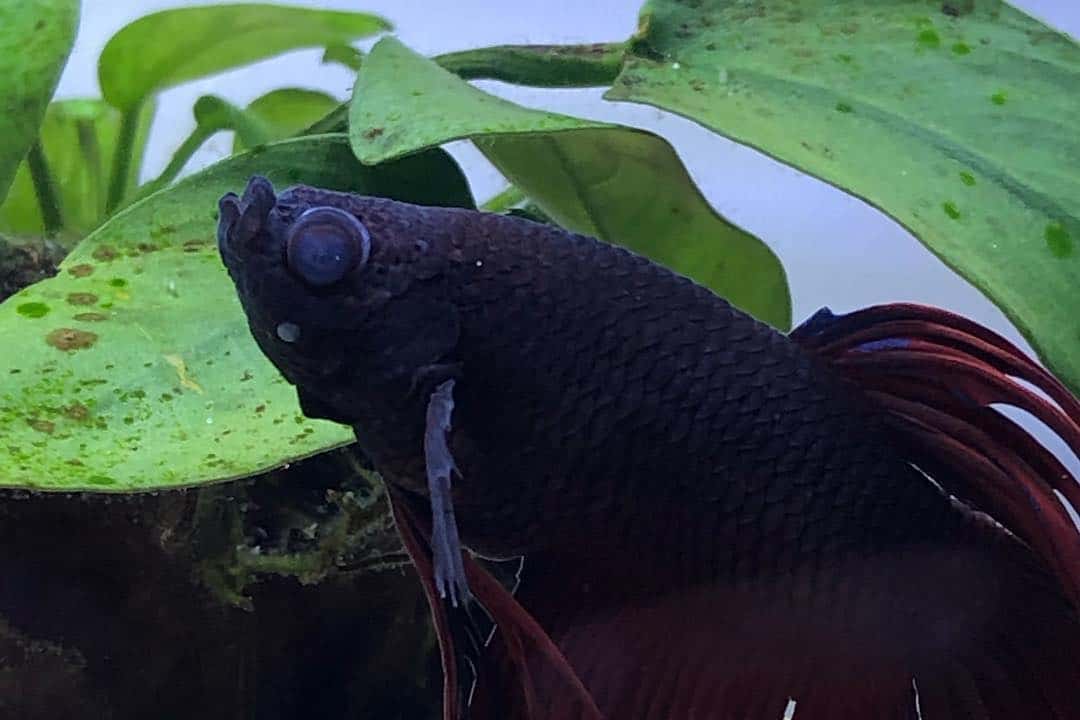Maybe one day you happened to take a closer look and noticed some fish in your tank displaying bulging eyes and you’re not sure what to do in this situation.
In this article, we’ll look at a phenomenon known as popeye disease, including its causes, its symptoms, treatment and prevention options, and if it’s dangerous for your fish.
Popeye disease is when a fish experiences bulging or swelling of the eyes, sometimes accompanied by several other symptoms.
Treatment, such as using antibiotics or palliative care, depends on the cause, which may range from an injury, infection, or poor water condition.
Before we move on to the treatment options, lets first have a more in-depth look at the disease, so that the treatment and preventive options later on make sense.
What is Popeye Fish Disease?

Popeye disease (otherwise known as exophthalmia) is a situation where a fish’s eyes become swollen and eventually bulge out from its eye sockets.
In this condition, one (unilateral) or both (bilateral) eyes may be affected, and the eyes may become cloudy as well in certain circumstances.
This condition isn’t the same as naturally protruding eyes as seen in some fish, such as the black moor goldfish or the telescope-eye goldfish.
Causes of Popeye Fish Disease
Oftentimes, popeye disease is caused by an injury, infection, or poor water conditions in the aquarium, however, this isn’t always the case and sometimes, the exact cause can remain undetermined. Here’s a more detailed look at the causes:
Popeye Due to Physical injuries
When only one eye is affected, especially if this is only seen in one fish in the tank, the most likely cause of the problem is some type of physical injury.
For example, a swollen eye may have been the result of a physical altercation with another fish, or perhaps that one fish had collided with some hard object in the tank.
This will be easy to tell if you notice damage to the eye. Fish that lack eyelids or are sensitive are particularly prone to these injuries.
If the problem is indeed due to a physical injury, the eye will usually heal on its own. Nonetheless, be sure to monitor the fish closely as that injury might still cause an infection, which, if left untreated, may cause permanent blindness in that eye.
An infection Caused the Popeye
If you have fish with both eyes affected, the more likely cause is an infection. Infection may have originated from a number of sources, such as bacteria, fungi, or parasites.
If you happen to notice your fish suffering from not just popeye, but dropsy (edema/fluid buildup of the belly) as well, the chances of your fish surviving are not high.
Any type of internal infection that results in kidney problems or some sort of metabolic issue can result in the fish having trouble retaining water, hence causing fluid to build up.
Poor Water Conditions are Causing the Problem
If you notice multiple fish in your tank displaying popeye, another likely cause is the poor quality of the water. A combination of stress and poor water conditions can weaken a fish’s immune system, allowing a bacterial infection to occur.
In this case, use a water testing kit to check the water chemistry and confirm your suspicions.
When the water is oversaturated with gas, the gas can cling to various surfaces in the tank, including on the fish’s body. In this case, the gas can enter the eyes and cause them to swell as well.
Unilateral vs. Bilateral Popeye
Here are the differences between the typical causes of unilateral and bilateral popeye:
| Unilateral | Bilateral | |
| Causes | · Physical damage (rough handling, collisions between fish and other objects, failed predation attempts, fish aggression)
· Poor water conditions |
· Usually poor water conditions
· An infection |
Symptoms of Popeye Fish Disease

Although your fish may display several complications due to popeye fish disease, the most defining feature of the illness is either one or both of the fish’s eyes protruding from its socket.
The bulge can appear subtle when it’s in its early stages or can be so severe that the whole eye and its socket are completely swollen.
Besides the swollen eyes, these are some of the other common symptoms that have been observed in infected fish:
- Expansion of the eye sockets
- Discoloration or blood visible in the eyeball
- Eyeball rupture
- Cloudiness in the eyeballs
- Inactivity
- Loss of appetite – typically an early sign of disease
- Behavioral changes (including becoming shy all of a sudden) – typically an early sign of disease
- Body becoming swollen
- Clamped fins (when the fins are kept in contact with the body)
In addition to the loss of appetite and changes in behavior, another early sign of popeye disease is a slight bulge in the eyes of fish that don’t normally have protruding eyes. This is typically due to the pressure of fluid leaking and building up in the area behind the eyeballs.
Be diligent as slight bulging can be hard to detect. If not found early, this can lead to significant protrusion as the condition worsens.
If the swelling gets to the point where it ruptures the cornea, the eye may appear cloudy, discolored, or bloodied. If the eyes rupture completely, the fish will likely become blind in the affected eye(s) even if it recovers from the disease.
Is Popeye Fish Disease Harmful?
Popeye fish disease can certainly be harmful to fish; however, the prognosis isn’t all bad as the fish can often recover if the disease is diagnosed early and the fish is given proper treatment.
Keep in mind, however, that it may take weeks or months for the swelling to recede, and even longer if the cornea(s) has been damaged.
Fish that have been severely damaged by the disease may eventually lose their damaged eye(s), hence permanently blinding them. Though this may dull their senses, it doesn’t usually become a significant setback for the fish.
If the fish was infected due to poor water conditions or infection and are not treated promptly, they could become stressed and eventually die due to a poor immune system and subsequent secondary infections.
Overall, it’s important to act quickly as fish that are treated swiftly often respond well and can recover.
Is the Disease Contagious?
Whether popeye fish disease is contagious or not depends on the cause. If the problem is due to an injury, then the condition is not contagious; if it’s due to an infection, the bacterium can potentially spread quickly to the other fish.
Treatments for Popeye Fish Disease

Treatment for popeye disease depends on the cause, but typically includes either leaving the injured eye to heal on its own, performing regular water changes, or treating the fish with antibiotics. Here are the methods in detail:
Perform Water Changes and Maintain a Healthy Diet in the Background
Before looking at specific treatment methods, it’s important to note that you should always maintain a sanitary aquarium environment in the background by performing routine water changes and watching out for water chemistry changes using water tests. An unsanitary environment can be a factor in not only popeye disease but various other fish ailments as well.
The fish should also be fed pristine-quality food in a balanced, vitamin-rich diet to strengthen and maintain their immune systems.
Both of these methods are helpful in treating popeye disease (as both can lead to stress and a weakened immune system) and is beneficial for various other potential diseases as well, and therefore should be maintained in the tank in the long run.
Treating Popeye Disease Due to Injuries
If damage is minor and is caused by a physical injury, the eye(s) will usually heal on its own over time, assuming the fish doesn’t develop any secondary infections or become stressed. It’s also important to maintain a clean tank and provide the fish with a well-balanced diet, as mentioned earlier.
If you wish to help the fish speed up its healing, you may consider performing palliative care by using aquarium/Epsom salt while the eye(s) heals. The salt will help relieve the swelling and aid the fish while the injury heals.
Typically, you’ll want to use about 3 to 5 teaspoons of Epsom salt per 5 gallons of water, however, the exact measurement will depend on the manufacturer of your product.
Epsom salt works in both freshwater and saltwater tanks, however, it’s best if the salt is administered to fish in a quarantine tank rather than in the primary display tank.
Along with moving your fish to a quarantine tank, you should make sure to keep the injured fish away from any tank decorations that can lead to further injuries (i.e. sharp-edged rocks, pointed plants, and decorative objects with sharp corners or points).
During healing, make sure to monitor the fish to ensure no secondary infections take place.
Treating Popeye Disease Due to Infection
As with the previous case, a fish suffering from popeye disease due to infection should also be moved to a quarantine tank/hospital aquarium in addition to being treated with antibiotics. This is so that there is no risk of transmitting the infection to other fish in the aquarium.
If you have multiple fish displaying the same symptoms, it’s possible the popeye disease-causing infection has already spread. In this case, you may wish to simply treat the entire aquarium as a whole.
For treatment, you should consider a food-based broad-spectrum antibiotic, meaning an antibiotic that specializes in treating internal and systemic infections, which you should administer to the food rather than the water.
If you noticed early signs of popeye disease, you can use antibiotics or antibacterials similar to those used to treat fin rot to prevent the damage from worsening.
In all cases, which exact antibiotic you choose to use should be recommended by your pet supplier or veterinarian, as they will know which is best to treat the infection.
Read More:
FAQs
1. Can Popeye Disease Affect Betta Fish?
Popeye disease can in fact affect betta fish. With the reasons mentioned, the most likely case scenario for betta fish is that there was some sort of physical injury that eventually developed into popeye.
Betta fish are particularly aggressive fish, hence it’s much more likely they developed popeye due to some physical injury instead of an infection.
In betta fish, the affected eye(s) may have white splotches or a ring around the area. You may also see them swimming around the same area, possibly due to discomfort.
In whichever case, it’s best to separate betta fish. Not only can being with other fish frequently cause physical injuries that can potentially develop into popeye, betta fish naturally do better living solitarily.
If you have betta fish infected with popeye disease, a proven antibacterial that works is Melafix, though the exact directions on using it will depend on the manufacturer.
Other details on the treatment of betta fish can be found here.
2. Can Popeye Disease Affect Goldfish?
Popeye disease can affect goldfish as well.
The usual causes of popeye disease in goldfish are dropsy, which is an internal bacterial infection, or goldfish tuberculosis. Since goldfish are not nearly as aggressive as betta, it’s less likely popeye developed in goldfish due to some type of physical injury.
Specific antibiotics must be used in order to treat bacterial infections in goldfish. One thing that also works is aquarium/Epsom salt, which helps reduce the swelling and provides the goldfish temporary relief.
A known antibiotic proven to work against these infections is Baytril, along with other more common treatments, such as Maracyn or Kanamycin. Even though the former is considered most effective for treating goldfish, you should leave it to the veterinarians to handle antibiotic injections.
3. What Should I Do to Prevent Future Reoccurrences of Popeye Disease?
Due to there being multiple causes of popeye disease, there isn’t one solution that will automatically prevent it from returning.
What you can do is maintain an overall well-established tank so that your fish, including their immune systems, are always at their best.
Examples of such include performing routine partial water changes, making sure the fish are fed a well-balanced diet with all their nutritional needs met, and regularly monitoring the tank to make sure the water chemistry is in balance.
Be sure to keep a close watch on your fish on a daily basis to catch any potential early signs of popeye disease. Also, try to limit any potential injuries your fish might be susceptible to in the tank.
Conclusion
Popeye fish disease is certainly not something you should take lightly, as it can cause severe debilitating long-term effects on your fish and may occasionally prove fatal.
Luckily, however, there are several ways you can treat and prevent the illness from occurring and, if you follow the steps mentioned in this article, you should have no trouble dealing with popeye disease in the future.
